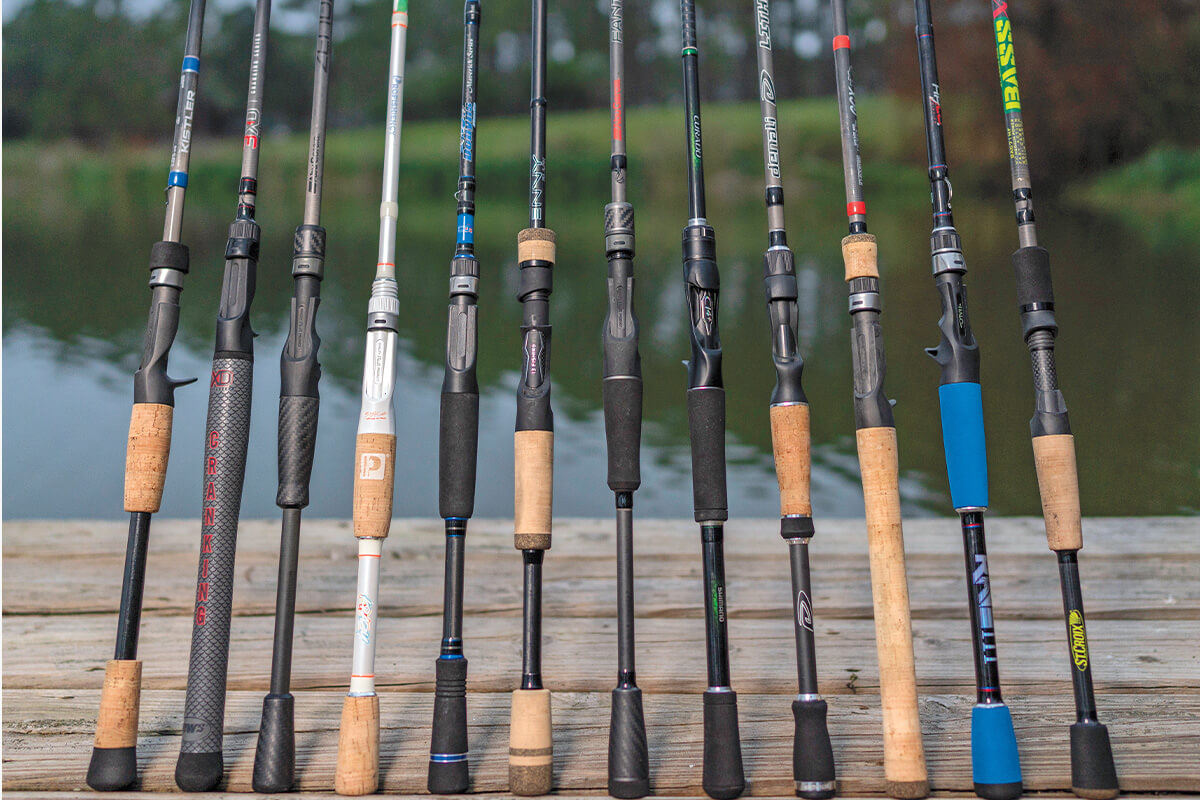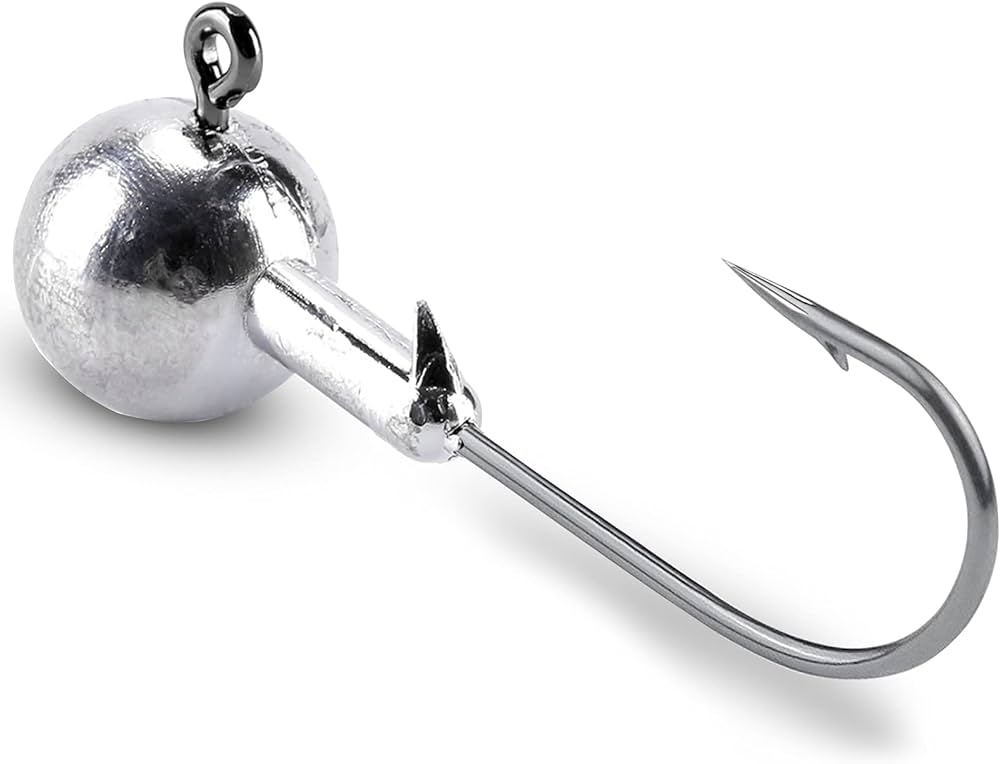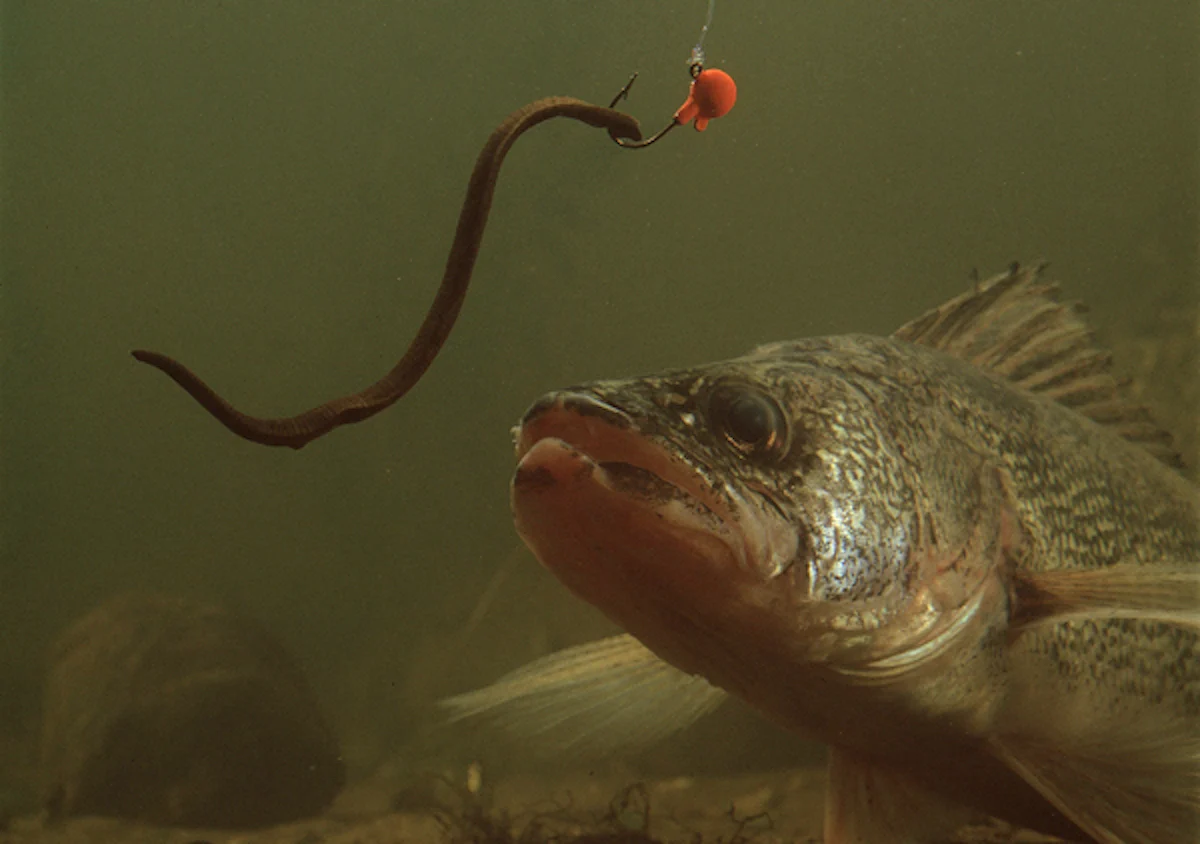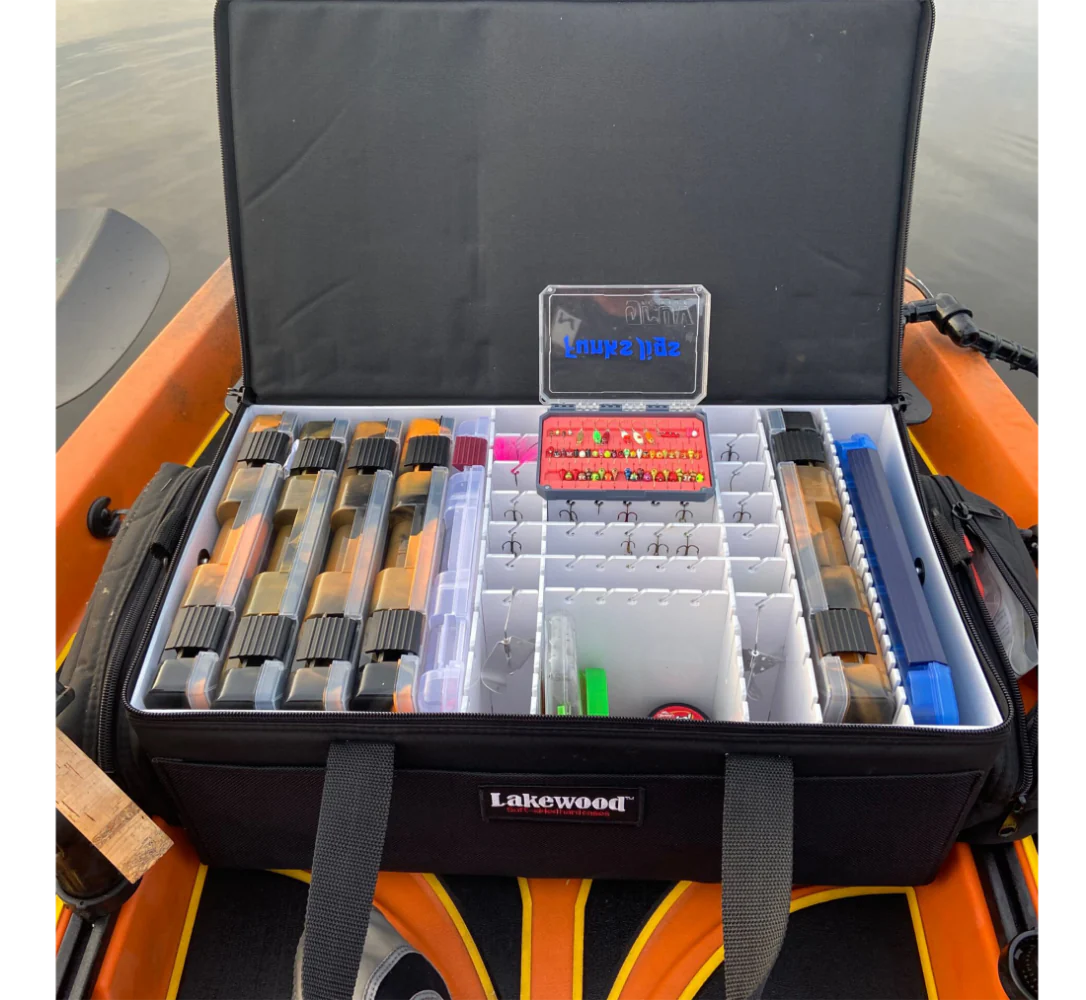Walleye fishing is a pursuit that demands the right combination of gear and technique. To increase your chances of success, it’s crucial to understand the specific equipment setups that are most effective for catching walleye sucessfully. This guide provides an in-depth look at the essential gear you’ll need, from rods and reels to lures and rigs.
Table of Contents
ToggleRod and Reel Selection
Rod Types: Choosing the right rod is a foundational aspect of walleye fishing.
- Spinning Rods: Spinning rods are the go-to choice for walleye anglers due to their versatility. A medium to medium-light rod, typically 6.5 to 7 feet in length, offers a good balance between sensitivity and strength. The moderate action allows for better feel and control when jigging or casting lighter lures, which are common techniques in walleye fishing.
- Baitcasting Rods: While less commonly used, baitcasting rods can be beneficial in specific situations, such as trolling or when using heavier lures. These rods provide greater casting accuracy and are suitable for experienced anglers who need to manage larger baits or fish in challenging conditions.

Reel Types: Pairing your rod with the right reel is essential for balance and effectiveness.
- Spinning Reels: Spinning reels are widely used in walleye fishing due to their ease of use and versatility. A reel with a smooth drag system, a gear ratio of around 5:1, and a line capacity of 150-200 yards of 8-12 pound test line is ideal. Spinning reels allow for better line management, which is crucial when using light lines and lures.
- Baitcasting Reels: Baitcasting reels are preferred for techniques like trolling or when casting larger lures. Look for a reel with a gear ratio of 6:1 or higher, which provides the power needed to retrieve heavier setups. These reels also offer more control over the line, making them suitable for precision casting.
Line Compatibility: Your choice of line is just as important as your rod and reel. Different lines serve different purposes, and understanding their strengths can make a big difference in your fishing success.
- Monofilament: Monofilament line is a good all-around choice for walleye fishing. Its stretchiness provides a cushion that helps prevent the hook from tearing out during a fight, especially when using treble hooks. Monofilament is also easier to handle, making it a good option for beginners. An 8-12 pound test is standard for most walleye situations.
- Fluorocarbon: Fluorocarbon line is nearly invisible underwater, making it an excellent choice for clear water conditions. It also sinks faster than monofilament, which can be beneficial when fishing deep. A 10-15 pound fluorocarbon leader is often used in conjunction with braided line to provide abrasion resistance and stealth.
- Braided Line: Braided line offers superior strength and sensitivity, allowing you to feel even the slightest bites. It has little to no stretch, making it ideal for techniques that require precise hook sets, like jigging. Braided line is often used in conjunction with a fluorocarbon leader to combine the strengths of both types. A 15-20 pound test braided line is typically recommended for walleye.
Leader Setup
Using a leader can be critical when targeting walleye, especially in clear or rocky environments.
- Leader Material: Fluorocarbon is the most common leader material for walleye due to its low visibility and abrasion resistance. Typically, a leader of 12-15 pound test is sufficient.
- Knots: The most popular knot for connecting a braided line to a fluorocarbon leader is the Double Uni Knot. This knot is strong, easy to tie, and maintains a low profile, which is important for smooth casting and retrieval.

Terminal Tackle
Hooks: Hooks are a fundamental part of any setup, and choosing the right type and size can make a difference.
- Octopus Hooks: These are popular for live bait presentations. Sizes range from 2 to 1/0, depending on the size of the bait being used. Octopus hooks are excellent for rigging leeches, minnows, and nightcrawlers.
- Circle Hooks: Circle hooks are ideal for catch-and-release fishing because they are designed to hook the fish in the corner of the mouth, reducing injury. Sizes typically range from 1 to 2/0 for walleye.
Sinkers and Weights: The right weight helps you present your bait at the correct depth and keep it in the strike zone.
- Split Shot: Split shot weights are commonly used when finesse fishing with live bait. They are easy to adjust on the line and provide just enough weight to keep the bait near the bottom.
- Bottom Bouncers: Bottom bouncers are essential for fishing in deeper waters or when trolling. They keep your bait close to the bottom while minimizing snags. A 1-2 ounce bottom bouncer is standard for most situations, but heavier weights may be necessary in strong currents.
- Slip Sinkers: Slip sinkers, like egg or bullet weights, are used in setups like the Carolina Rig. They allow the fish to take the bait without feeling resistance from the weight.
Swivels and Snaps: Swivels prevent line twist, which is especially important when using lures that spin, such as spinners and crankbaits.
- Barrel Swivels: These are the most common type and are often used in combination with a snap to allow for quick lure changes.
- Snap Swivels: Snap swivels combine the function of a swivel with the convenience of a snap, making it easy to change lures without retying knots.
Floats and Bobbers: Floats and bobbers are useful for suspending bait at a specific depth.
- Slip Bobbers: Slip bobbers are adjustable and allow you to present your bait at any depth. They are particularly useful when fishing for suspended walleye in deep water. Use a small to medium-sized slip bobber to match the size of your bait and the depth you are fishing.
Lure and Bait Selection
Jigs: Jigs are a staple in walleye fishing and come in various styles and sizes.
- Ball Head Jigs: These are versatile and work well with live bait or soft plastics. A 1/8 to 3/8 ounce jig is ideal for most walleye fishing conditions. The ball head design allows for a natural presentation and is less likely to get snagged.

- Round Head Jigs: Similar to ball head jigs, these are also effective for walleye. They work well with a variety of baits, including minnows, leeches, and soft plastics.
Crankbaits: Crankbaits are effective for covering large areas and targeting active walleye.
- Shallow-Diving Crankbaits: These are used when walleye are feeding in shallow water, typically less than 10 feet deep. Shallow-diving crankbaits are also effective when casting towards shorelines or over submerged vegetation.
- Deep-Diving Crankbaits: When walleye move into deeper water, typically during the summer or late fall, deep-diving crankbaits are the go-to choice. These lures can reach depths of 20 feet or more, making them ideal for trolling along drop-offs and ledges.
Soft Plastics: Soft plastic baits are versatile and can be used in a variety of ways.
- Grubs: Grubs are excellent for jigging, especially when walleye are feeding on small baitfish. Pair them with a jig head and fish them slowly near the bottom.
- Worms and Minnows: Soft plastic worms and minnows are great for rigging on jigs or spinner rigs. They offer a lifelike action that can entice even the most finicky walleye.
Live Bait: Live bait is often the most effective way to catch walleye, especially in cold water or when the fish are sluggish.
- Nightcrawlers: Nightcrawlers are a classic walleye bait. They can be rigged on a variety of setups, including spinner rigs and jig heads. Slow trolling with a nightcrawler harness is a proven technique for catching walleye.
- Minnows: Minnows are another top choice for walleye, particularly in the spring and fall when the fish are feeding heavily on baitfish. Use them on a slip bobber rig or a jig for best results.
- Leeches: Leeches are effective in warmer water, particularly in the summer. Rig them on a slip bobber or a jig, and fish them slowly near the bottom.

Specialized Rigs for Walleye
Lindy Rig: The Lindy Rig is a versatile setup that allows for precise control over your bait’s depth.
- Setup: This rig consists of a sliding sinker, a swivel, a leader, and a hook. The sliding sinker allows the fish to take the bait without feeling the weight, giving you more time to set the hook.
- Usage: The Lindy Rig is ideal for fishing in deeper water or when walleye are holding close to the bottom. It is often used with live bait, such as minnows or nightcrawlers.
Slip Bobber Rig: The Slip Bobber Rig is perfect for targeting walleye at specific depths.
- Setup: A slip bobber allows you to adjust the depth of your bait without having to retie your line. This rig is especially useful when fishing over submerged structure or when walleye are suspended in the water column.
- Usage: The Slip Bobber Rig is effective in both shallow and deep water. It’s often used with live bait like leeches or minnows, and is particularly useful in still or slow-moving water.
Bottom Bouncer Rig: This rig is designed for fishing in deeper water or over rocky bottoms.
- Setup: The Bottom Bouncer Rig consists of a weighted wire arm that keeps your bait close to the bottom while minimizing snags. A leader and hook are attached to the wire arm.
- Usage: This rig is commonly used when trolling for walleye in lakes and reservoirs. It works well with live bait, such as nightcrawlers or minnows, and can also be used with spinner rigs.
Spinner Rigs: Spinner rigs are a popular choice for trolling, especially in clear water or when walleye are actively feeding.
- Setup: A spinner rig consists of a spinning blade, beads, and a hook. The spinning blade creates flash and vibration, attracting walleye from a distance.
- Usage: Spinner rigs are most effective when trolled at slow to moderate speeds. They can be used with live bait or soft plastics and are particularly effective in clear water conditions.
Electronics and Additional Gear
Fish Finders and Sonar: Electronics are invaluable for locating walleye, especially in large bodies of water.
- Using Electronics: A fish finder with sonar capabilities allows you to see the structure and identify schools of walleye. Understanding how to interpret the data on your fish finder is crucial for successful walleye fishing.
Tackle Boxes and Storage: Organizing your gear is essential for efficiency on the water.
- Storage Tips: Use tackle boxes with adjustable compartments to keep your lures, hooks, and other tackle organized. Consider using waterproof tackle boxes to protect your gear from the elements.

Landing Nets: A good landing net is essential for safely landing walleye, especially larger fish.
- Choosing a Net: Look for a landing net with a deep, rubber-coated basket. The rubber coating helps prevent hooks from getting tangled in the net and is gentler on the fish, making it ideal for catch-and-release fishing.
Seasonal Considerations
Spring Setup: In the spring, walleye are often found in shallow water as they prepare to spawn.
- Gear Adjustments: Use lighter tackle and smaller baits to match the conditions. Jigs and live bait are particularly effective during this time.
Summer Setup: As the water warms, walleye move to deeper, cooler waters.
- Gear Adjustments: Switch to heavier tackle and deep-diving crankbaits or bottom bouncers to reach the depths where walleye are holding.
Fall Setup: In the fall, walleye return to shallower waters as they feed heavily before winter.
- Gear Adjustments: Use medium to heavy tackle and larger baits to match the walleye’s aggressive feeding behavior. Spinner rigs and crankbaits are particularly effective during this time.
Having the right equipment setup is crucial for successful walleye fishing. By selecting the appropriate rod, reel, line, and tackle, you can effectively target walleye in a variety of conditions. Understanding the different setups and when to use them will greatly enhance your fishing experience and increase your chances of landing more fish. Whether you’re a beginner or a seasoned angler, following these guidelines will help you optimize your equipment for walleye fishing.

Robert Smith is the proud owner of Bait Barrels and Bows, a premier fishing sports store established in 1989. With over three decades of experience in the industry, Robert has honed his skills to become an expert angler, sharing his vast knowledge and passion for fishing with enthusiasts around the world. Through his store and writings, Robert provides invaluable tips and guidance, helping both novice and seasoned anglers improve their techniques and enjoy the sport to its fullest. His commitment to the fishing community is evident in his dedication to quality products and excellent customer service.

